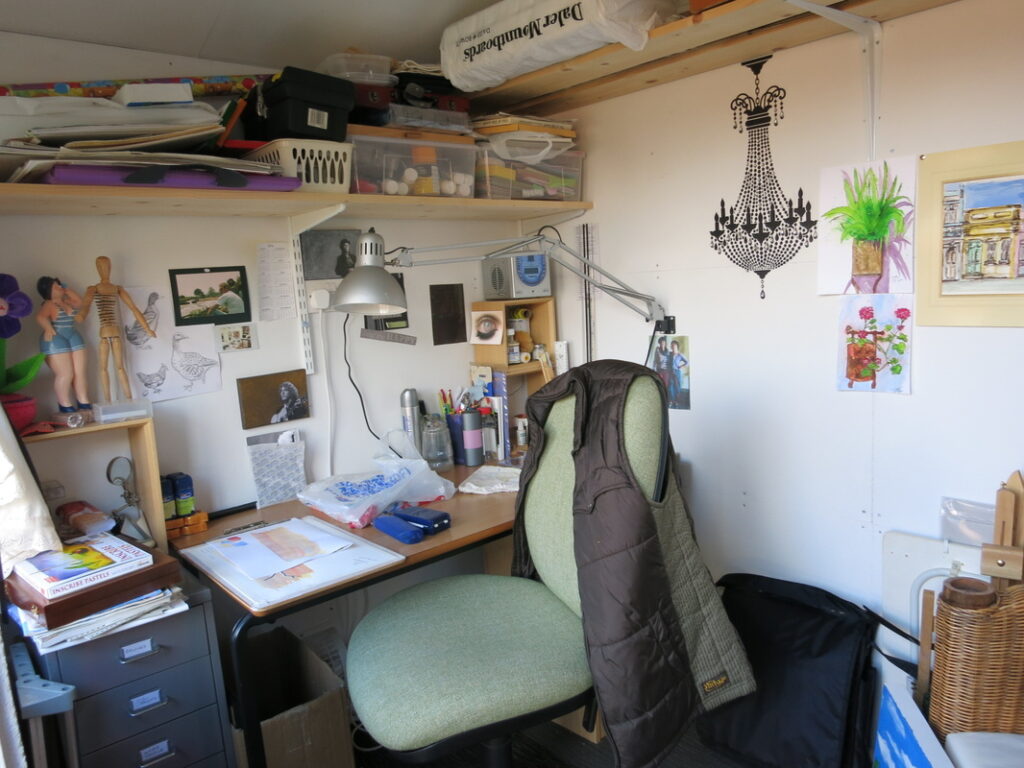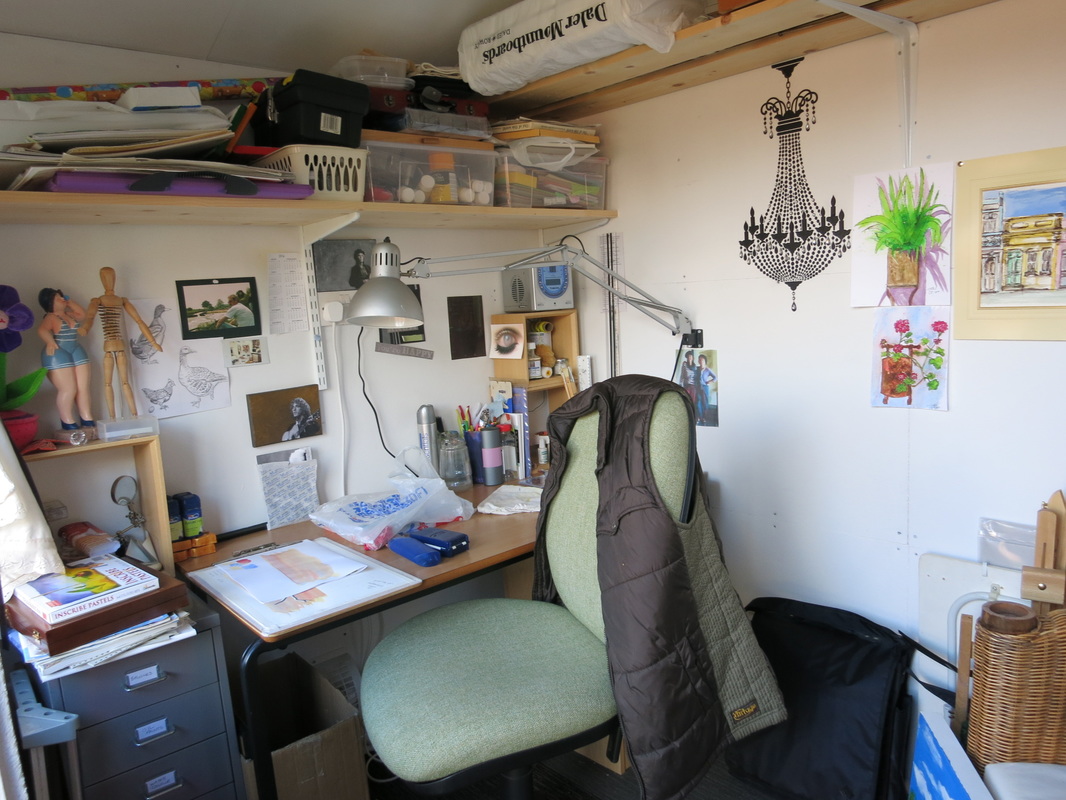
Transforming Your Garden Shed into a Stunning Art Studio: A Comprehensive Guide
For artists seeking a dedicated space to nurture their creativity, a garden shed art studio presents an appealing and often cost-effective solution. Converting an existing shed or constructing a new one specifically for artistic pursuits allows you to separate your creative sanctuary from the distractions of daily life. This article provides a comprehensive guide to transforming your garden shed into a functional and inspiring art studio.
Why Choose a Garden Shed Art Studio?
Before diving into the specifics, let’s explore the compelling reasons to opt for a garden shed art studio:
- Dedicated Space: A garden shed art studio offers a dedicated area solely for your artistic endeavors, free from interruptions and the need to constantly pack up supplies.
- Cost-Effectiveness: Compared to renting a studio or building an extension, converting a garden shed is often a more budget-friendly option.
- Natural Light: Sheds can be designed or modified to maximize natural light, crucial for accurate color perception and overall creative inspiration.
- Proximity to Nature: Working in a garden shed art studio allows you to connect with nature, providing a calming and inspiring environment.
- Customization: You have complete control over the design and layout of your garden shed art studio, tailoring it to your specific artistic needs.
Planning Your Garden Shed Art Studio
Careful planning is essential for creating a successful garden shed art studio. Consider the following factors:
Size and Location
The size of your garden shed art studio will depend on the scale of your artwork and the amount of equipment you need to accommodate. Choose a location in your garden that receives ample natural light but is also protected from harsh weather conditions. Consider proximity to power outlets and water sources, if needed. Ensure the location allows for proper ventilation. A larger shed provides more flexibility for different art forms and storage. Think about future needs as well; you might want to expand your artistic pursuits later.
Budget
Establish a realistic budget that encompasses all aspects of the conversion, including the cost of the shed itself (if building new), insulation, flooring, lighting, ventilation, and furniture. Factor in potential unexpected expenses. Prioritize essential elements first. Research different materials and construction methods to find cost-effective solutions. Consider DIY options to save money, but ensure you have the necessary skills or hire professionals for tasks beyond your capabilities.
Permits and Regulations
Check with your local authorities regarding building permits and regulations for constructing or modifying a garden shed. Ensure your project complies with all relevant codes to avoid potential legal issues. Regulations may vary depending on the size and location of the shed. Ignoring these regulations can lead to fines or even the requirement to dismantle your studio. It’s always better to be safe than sorry.
Designing Your Garden Shed Art Studio
The design of your garden shed art studio should prioritize functionality and inspiration. Here are some key design considerations:
Layout and Organization
Plan the layout of your garden shed art studio to optimize workflow and minimize clutter. Designate specific areas for different activities, such as painting, sculpting, or drawing. Implement storage solutions to keep your supplies organized and easily accessible. Use vertical space to maximize storage capacity. Consider incorporating a comfortable seating area for relaxation and contemplation. Think about the flow of movement within the studio to ensure a smooth and efficient creative process.
Lighting
Adequate lighting is crucial for any art studio. Maximize natural light by installing large windows or skylights. Supplement natural light with artificial lighting, such as adjustable spotlights and task lighting. Consider the color temperature of your lighting to ensure accurate color representation. Avoid harsh shadows and glare. Proper lighting can significantly improve your artistic output and reduce eye strain. [See also: Choosing the Right Lighting for Your Art Studio]
Ventilation
Proper ventilation is essential for removing fumes from paints, solvents, and other art materials. Install a ventilation system or ensure adequate airflow through windows and doors. Consider using air purifiers to improve air quality. Poor ventilation can lead to health problems and discomfort. Make sure your garden shed art studio has a comfortable and safe environment to work in.
Insulation
Insulating your garden shed art studio will help regulate temperature and reduce energy costs. Choose insulation materials that are appropriate for your climate and budget. Proper insulation will keep your studio warm in the winter and cool in the summer. This will allow you to work comfortably year-round. Consider using eco-friendly insulation materials to minimize your environmental impact.
Flooring
Choose flooring that is durable, easy to clean, and resistant to spills and stains. Concrete, vinyl, and sealed wood are all good options. Consider adding rugs or mats for comfort and warmth. Avoid porous materials that can absorb spills. A durable and easy-to-clean floor will make maintaining your garden shed art studio much easier.
Essential Equipment and Furniture
Equip your garden shed art studio with the essential equipment and furniture needed for your specific artistic pursuits:
- Worktables: Choose sturdy and adjustable worktables that provide ample space for your projects.
- Easels: Select easels that are appropriate for the size and type of artwork you create.
- Storage Cabinets: Invest in storage cabinets to keep your supplies organized and protected.
- Seating: Choose comfortable and ergonomic seating that supports good posture.
- Lighting: Install adjustable spotlights and task lighting to provide adequate illumination.
Decorating Your Garden Shed Art Studio
Personalize your garden shed art studio with decorations that inspire creativity and reflect your artistic style:
- Artwork: Display your own artwork or the work of other artists to create an inspiring atmosphere.
- Plants: Add plants to bring life and energy into your studio.
- Color Palette: Choose a color palette that is calming and conducive to creativity.
- Inspirational Quotes: Display inspirational quotes to motivate and encourage you.
- Personal Touches: Add personal touches that reflect your personality and artistic interests.
Maintaining Your Garden Shed Art Studio
Regular maintenance is essential for keeping your garden shed art studio in good condition:
- Cleaning: Clean your studio regularly to remove dust, spills, and debris.
- Organization: Maintain an organized workspace to minimize clutter and maximize efficiency.
- Repairs: Address any repairs promptly to prevent further damage.
- Ventilation: Ensure adequate ventilation to prevent moisture buildup and mold growth.
- Pest Control: Implement pest control measures to protect your supplies and artwork.
Conclusion
Transforming a garden shed into a dedicated art studio is a rewarding project that can significantly enhance your creative practice. By carefully planning, designing, and equipping your studio, you can create a functional and inspiring space that nurtures your artistic talents. With dedication and attention to detail, your garden shed art studio can become your personal sanctuary for artistic expression. Embrace the opportunity to create a space that truly reflects your artistic vision and supports your creative journey. Remember to prioritize natural light, proper ventilation, and comfortable workspace to optimize your experience in your new garden shed art studio.

